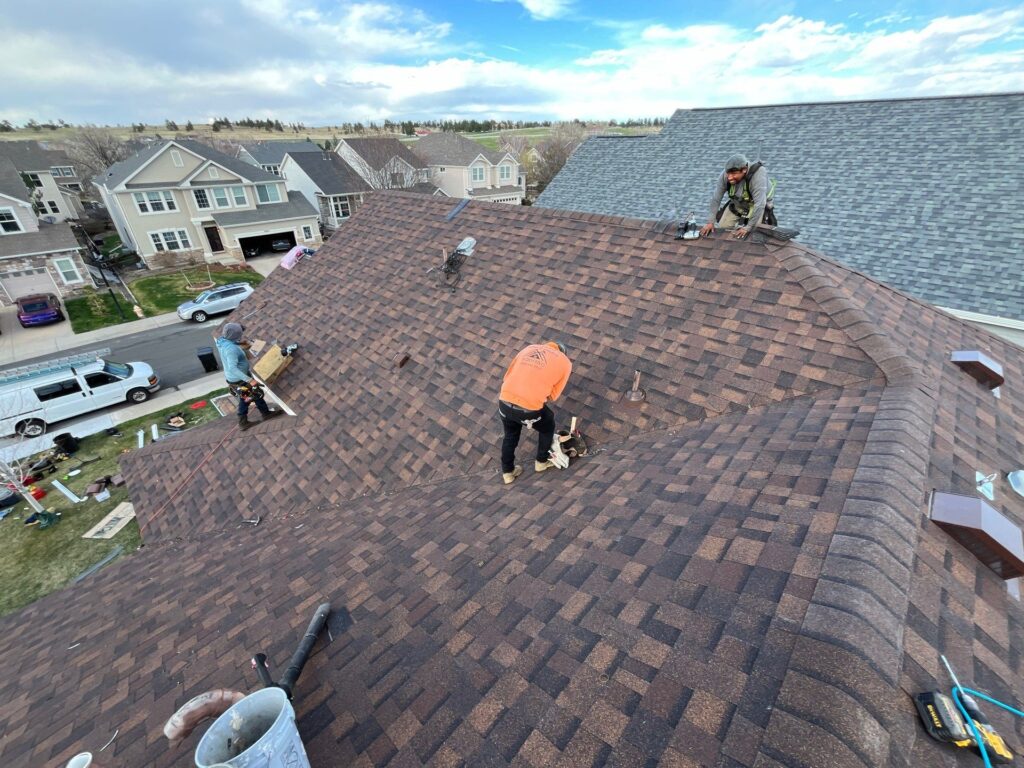
When it comes to protecting your home in Denver, few elements pose as immediate and costly a threat as hail. The region’s altitude and climate patterns make it a prime target for severe hailstorms. Recognizing how hail affects roofing systems is critical for homeowners seeking to mitigate damage, extend roof longevity, and reduce insurance premiums.
The Science Behind Hail Impact: Why Denver Roofs Are at Risk
Hail is not a uniform threat. The destructive capacity of a hailstorm is determined by three primary factors: hail size, density, and velocity. In Denver, the combination of cold air aloft and dry surface conditions allows hailstones to grow larger and hit harder before melting.
When hailstones reach sizes of 1 inch or more, they strike roofing materials with enough force to bruise, crack, or completely shatter them. Dense hail, often mixed with sleet or freezing rain, can punch through asphalt shingles, weaken structural decking, and cause latent moisture penetration. Velocity—especially when paired with high winds—exponentially increases this damage, creating entry points for water and pests.
Roofing Materials and Their Vulnerability to Hail
Not all roofs are created equal when it comes to hail resistance. Here’s how common materials perform under hail impact:
- Asphalt Shingles: The most common material used in Denver roofing, asphalt shingles tend to suffer granule loss, surface bruising, and fracture lines after hailstorms. Granule loss accelerates UV degradation, further shortening roof life.
- Wood Shakes: While somewhat flexible, wood is prone to splitting and gouging, especially when hailstones are sharp or icy.
- Metal Roofs: These often dent rather than crack, which may be more cosmetic than structural but can still affect resale value.
- Clay and Slate Tiles: Beautiful and durable, but brittle. Large hailstones can easily shatter them.
Older roofing systems, regardless of material, are more susceptible due to wear, UV exposure, and prior storm impacts. Roofs that are past 15 years of age are at significantly higher risk and should be inspected more frequently.
Warning Signs of Hail Damage That Require Immediate Action
Homeowners in the Denver area must remain vigilant after hail events. The following are clear indicators that your roof may be compromised:
- Granule Accumulation in Gutters: Excess granules signal shingle erosion.
- Cracked or Missing Shingles: These can lead to immediate leaks.
- Water Stains on Ceilings or Walls: A sign that hail damage has already led to water infiltration.
- Soft Spots or Indentations: Especially common with older asphalt roofing.
Ignoring these signs can lead to interior water damage, mold growth, structural rot, and the need for full roof replacement rather than repair.
Preventive Measures to Protect Your Denver Roof from Hailstorms
Homeowners can take proactive steps to minimize hail damage before the next storm:
- Install Impact-Resistant Shingles (Class 4): These are designed to withstand large hailstones and meet higher UL2218 impact ratings.
- Regular Roof Inspections: At least annually, and especially after hailstorms, by a certified roofer.
- Reinforce Vulnerable Areas: Flashing, skylights, and vents can be protected with specialized guards or covers.
- Gutter Maintenance: Ensure water is diverted correctly to reduce standing water on roof surfaces.
- Trim Overhanging Trees: Branches can snap during hailstorms and compound roof damage.
The Role of Professional Roofers in Denver for Hail Recovery
Once hail damage occurs, time is critical. Working with licensed and experienced roofers in Denver ensures not only accurate damage assessment but also proper repair techniques that comply with local building codes and insurance requirements. This includes using infrared scans to detect hidden water infiltration, resealing compromised underlayment, and upgrading to materials that are better suited for Denver’s volatile climate.
One such trusted provider, Tried and True Roofing, offers hail-resistant solutions tailored to the unique roofing needs of Denver, Colorado homes. Their expertise in storm damage assessment and restoration ensures lasting protection and peace of mind.
CONCLUSION
In a city like Denver, where hail is not an anomaly but a seasonal certainty, understanding and addressing hail-related roof damage is not optional—it’s essential. By knowing what to look for, selecting the right materials, and partnering with qualified Denver roofing companies, homeowners can minimize risk and safeguard their property from extensive damage. Prevention, early detection, and expert repair remain the cornerstones of resilient, long-lasting roofing in Denver, Colorado.

